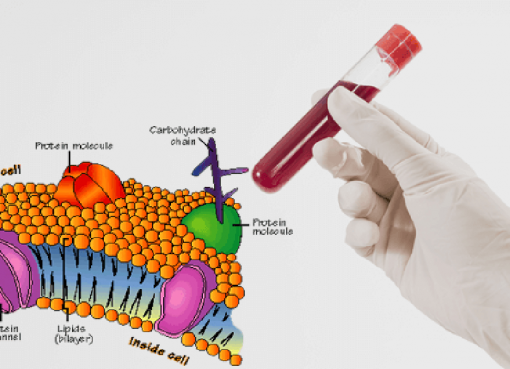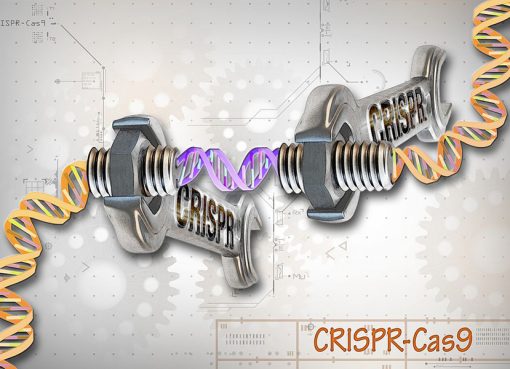Syeda Tamanna Yasmin
Research Scholar, Dept. of Microbiology, Assam Don Bosco University, Guwahati, Assam
“The human body has been designed to resist an infinite number of changes and attacks brought about by its environment. The secret of good health lies in successful adjustment to changing stresses on the body.” – Harry J. Johnson.
Fifty years ago, the World Health Organization (WHO) defined health as “a state of complete physical, mental and social well-being and not merely the absence of disease or infirmity.” This definition should serve as a reminder that redefining the view of environmental health and natural environment requires many shifts in thinking, as well as a willingness to pursue a diversity of approaches.
Advances in the field of environmental health have taught us about human health hazards; for example, air pollution can cause respiratory disease, heavy metals can cause neurotoxicity, and global climate change is likely to fuel the spread of infectious diseases. Diet varies from person to person, place to place and occasion to occasion, it is found that there is a vast difference between the diet of early human and today’s modern diet. But the world continues to lose species on a daily basis so challenges also remain in assuring a safe and healthful food supply which leads to transition from time to time.
The natural environment can also enhance health; for example, many pharmaceuticals are derived from plants and animals which are continuing since the palaeolithic era as traditional medicines, but continuous research on these has led to discovery of new traditional medicines in the recent time providing a compelling argument for preserving biodiversity too. In addition, contact with the natural world may be directly beneficial to human health. So according to research, there’s a huge understanding in the interactions of human health and the natural environment.
During Palaeolithic era, people used stone to make their tools to meet basic needs for food, shelter, and clothing. Their physical activity depends on their ability to hunt or gather food, produce water, build and maintain clothing and shelter, escaping from predators and enjoying social interaction. Barefoot walking had strengthened their muscles, tendons and general co-ordination, reducing the possibility of developing acute/chronic health disorders. They prepared their healthy balanced diet preferably from natural sources. Therefore, the contribution of both energy intake and expenditure turned balanced and is a vital component to maintain their health. It was estimated that one-third of their energy intake was spent on physical activity. But in the modern era, things are technologically more advance and less hardworking compared to palaeolithic era; here money is the more powerful weapon and things are usually done sitting at home. Everything is available in the market even ready to eat packet frozen foods are also available having huge amount of chemicals and preservatives. Intermittent fasting was practiced by our ancestors and a few groups of people till date, which significantly helped to control the variety of health indicators including glucose, cholesterol, triglycerides and other metabolites. Lack of sunlight has been shown to be a cause of depression and lack of sunlight during winter results in reduced Vitamin D synthesis and immunity leading to onset of “flu” during this season. Cold baths have been shown to enhance the immune system and hot baths promote the release of “heat shock proteins” that protect and repair damage to the body’s cells. All the above factors were accomplished in those days. In the modern era, advancement in technology has directed us to lead sedentary lifestyle and has resulted in marked decline in our regular physical activity and food habits compared to the Palaeolithic life style. Physical inactivity over a longer period of time has been identified as a risk factor for the development of non-communicable diseases. The major reasons for physical inactivity are insufficient participation in physical activity, a sedentary lifestyle and increased use of passive modes of transport, and increased urbanization. The sedentary lifestyle has high calorie-rich diets with additives that may interfere with their metabolism. These foods also contain easily digestible carbohydrates which increase the glucose levels in blood and are further stored as fat by the action of insulin.
Palaeolithic diet is the modern interpretation of diet that humans ate during Palaeolithic or “Old Stone Age” era. Notable anatomic and physiologic changes are taking place in humans as they adapted themselves to climate change, learned to cook meat using fire, and began to use stone tools for greater access to food and resources. Anthropologists hold that the diet of our ancestors heavily influenced their neural expansion, increasing brain size, and reduction in their gastrointestinal tract size. The last 100 years has much industrialization. While it is essential for human advancement, industrialization has also raised ultra-processed, low cost, readily available foods to sustain food supply to a growing population. As a consequence of consuming these foods, the rate of chronic diseases has increased. Scientists and lay people alike have started looking at solutions for these epidemics; alternative focus was not just on medications but the adoption of significant dietary and lifestyle changes. This quest for the “ideal” diet for health and longevity has brought to light several ancient cuisines, and some have been thoroughly studied, like the “Mediterranean Diet.” The central tenet behind this diet hinges on reverting back to what our prehistoric ancestors ate and rejecting modern-day, processed diet in order to improve our healthcare outcomes. The challenge with this diet, however, is that conflicting versions about these foods are presented to the public. One of the most popular misconceptions is that our ancient ancestors were mainly carnivorous when, in fact, they mostly ate a plant-based diet. Scientists and anthropologists have been able to reconstruct this diet based on evidence gathered from archaeological remains and by studying modern tribes. It is clear that “Stone Age” humans did eat a variety of high-quality foods that were rich in nutrients and fibre. Compared to this diet, modern diets provide much less variety and are loaded with artificial sugars and salt. Studies have shown that on the Palaeolithic Diet, compared to the Mediterranean Diet, decreased their all-cause mortality, decreased oxidative stress, and also decreased mortality and also overweight found Palaeolithic diet decreased lipogenesis promoting factors, improved insulin sensitivity, and reduced circulating triglycerides. The Palaeolithic diet also has been studied as a supplement for therapeutic management in patients with inflammatory bowel disease. But it is clear that the diet our ancestors ate had a major impact on our genetic evolution. Since today’s diet no longer contains the same variety and nutrition, there is an increase in chronic diseases caused by both “undernutrition” and “overnutrition.”. Transition takes place because every few years a new diet is introduced that is thought to be the panacea for good health. Our genome has changed little since the beginning of agriculture; so, genetically, humans remain Stone Agers adapted a Palaeolithic dietary regimen. Such diets were based chiefly on wild game, fish and uncultivated plant foods. They provided abundant protein, a fat profile much different from that of affluent Western nations, high fibre, carbohydrate from fruits and vegetables but not from cereals, refined sugars and dairy products, high levels of micronutrients and probably of phytochemicals as well.
During the course of evolution, until the agricultural revolution, environmental fluctuations forced the human species to develop a flexible metabolism in order to adapt its energy needs to various climate, seasonal and vegetation conditions. Metabolic flexibility safeguarded human survival independent of food availability. In modern times, humans switched their primal lifestyle towards a constant availability of energy-dense, yet often nutrient-deficient, foods, persistent psycho-emotional stressors and a lack of exercise. As a result, humans progressively gain metabolic disorders, such as the metabolic syndrome, type 2 diabetes, non-alcoholic fatty liver disease, certain types of cancer, cardiovascular disease and Alzheimer´s disease, wherever the sedentary lifestyle spreads in the world. For more than 2.5 million years, our capability to store fat for times of food shortage was an outstanding survival advantage. Nowadays, the same survival strategy in a completely altered surrounding is responsible for constant accumulation of body fat for periods of food deficiency. In a simplified model, the basic metabolic programs of humans’ primal hunter-gatherer lifestyle are opposed to the current sedentary lifestyle. Those metabolic programs, which are chronically neglected in modern surroundings, are identified and conclusions for the prevention of chronic metabolic diseases are drawn.
So, lastly it is clear that there are differences between contemporary and ancestral diets which have many pathophysiological implications. There should be formal recommendations and awareness regarding the Palaeolithic nutritional patterns. It should generate novel, testable hypotheses grounded in evolutionary theory, and it should dispel complacency regarding currently accepted nutritional tenets. Modern era diet must contain the good components from palaeolithic diet for proper health and people must look after the transitions that actually happening knowingly or unknowingly. By proper care and healthy diet, one can think of healthy lifestyle to build up a healthy immune system and to avoid disease.
The doctor of the future will give no medicine, but will instruct his patients in care of the human frame, in diet, and in the cause and prevention of disease.” – Thomas Edison.




